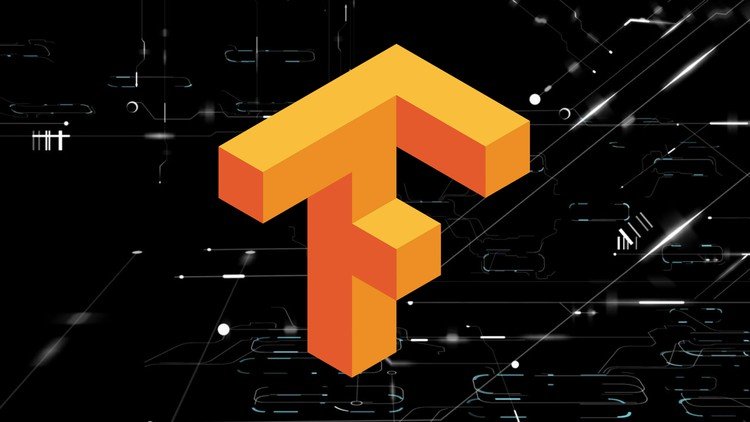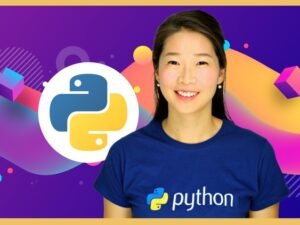Tensorflow 2.0: Deep Learning and Artificial Intelligence
- Description
- Curriculum
- FAQ
- Reviews
Welcome to Tensorflow 2.0!
What an exciting time. It’s been nearly 4 years since Tensorflow was released, and the library has evolved to its official second version.
Tensorflow is Google’s library for deep learning and artificial intelligence.
Deep Learning has been responsible for some amazing achievements recently, such as:
-
Generating beautiful, photo-realistic images of people and things that never existed (GANs)
-
Beating world champions in the strategy game Go, and complex video games like CS:GO and Dota 2 (Deep Reinforcement Learning)
-
Self-driving cars (Computer Vision)
-
Speech recognition (e.g. Siri) and machine translation (Natural Language Processing)
-
Even creating videos of people doing and saying things they never did (DeepFakes – a potentially nefarious application of deep learning)
Tensorflow is the world’s most popular library for deep learning, and it’s built by Google, whose parent Alphabet recently became the most cash-rich company in the world (just a few days before I wrote this). It is the library of choice for many companies doing AI and machine learning.
In other words, if you want to do deep learning, you gotta know Tensorflow.
This course is for beginner-level students all the way up to expert-level students. How can this be?
If you’ve just taken my free Numpy prerequisite, then you know everything you need to jump right in. We will start with some very basic machine learning models and advance to state of the art concepts.
Along the way, you will learn about all of the major deep learning architectures, such as Deep Neural Networks, Convolutional Neural Networks (image processing), and Recurrent Neural Networks (sequence data).
Current projects include:
-
Natural Language Processing (NLP)
-
Recommender Systems
-
Transfer Learning for Computer Vision
-
Generative Adversarial Networks (GANs)
-
Deep Reinforcement Learning Stock Trading Bot
Even if you’ve taken all of my previous courses already, you will still learn about how to convert your previous code so that it uses Tensorflow 2.0, and there are all-new and never-before-seen projects in this course such as time series forecasting and how to do stock predictions.
This course is designed for students who want to learn fast, but there are also “in-depth” sections in case you want to dig a little deeper into the theory (like what is a loss function, and what are the different types of gradient descent approaches).
Advanced Tensorflow topics include:
-
Deploying a model with Tensorflow Serving (Tensorflow in the cloud)
-
Deploying a model with Tensorflow Lite (mobile and embedded applications)
-
Distributed Tensorflow training with Distribution Strategies
-
Writing your own custom Tensorflow model
-
Converting Tensorflow 1.x code to Tensorflow 2.0
-
Constants, Variables, and Tensors
-
Eager execution
-
Gradient tape
Instructor’s Note: This course focuses on breadth rather than depth, with less theory in favor of building more cool stuff. If you are looking for a more theory-dense course, this is not it. Generally, for each of these topics (recommender systems, natural language processing, reinforcement learning, computer vision, GANs, etc.) I already have courses singularly focused on those topics.
Thanks for reading, and I’ll see you in class!
WHAT ORDER SHOULD I TAKE YOUR COURSES IN?:
-
Check out the lecture “Machine Learning and AI Prerequisite Roadmap” (available in the FAQ of any of my courses, including the free Numpy course)
UNIQUE FEATURES
-
Every line of code explained in detail – email me any time if you disagree
-
No wasted time “typing” on the keyboard like other courses – let’s be honest, nobody can really write code worth learning about in just 20 minutes from scratch
-
Not afraid of university-level math – get important details about algorithms that other courses leave out
-
5Intro to Google Colab, how to use a GPU or TPU for freeVideo lesson
-
6Tensorflow 2.0 in Google ColabVideo lesson
-
7Uploading your own data to Google ColabVideo lesson
-
8Where can I learn about Numpy, Scipy, Matplotlib, Pandas, and Scikit-Learn?Video lesson
-
9How to Succeed in This CourseVideo lesson
-
10Temporary 403 ErrorsVideo lesson
-
11What is Machine Learning?Video lesson
-
12Code Preparation (Classification Theory)Video lesson
-
13Classification NotebookVideo lesson
-
14Code Preparation (Regression Theory)Video lesson
-
15Regression NotebookVideo lesson
-
16The NeuronVideo lesson
-
17How does a model "learn"?Video lesson
-
18Making PredictionsVideo lesson
-
19Saving and Loading a ModelVideo lesson
-
20Why Keras?Video lesson
-
21Suggestion BoxVideo lesson
-
22Artificial Neural Networks Section IntroductionVideo lesson
-
23Beginners Rejoice: The Math in This Course is OptionalVideo lesson
-
24Forward PropagationVideo lesson
-
25The Geometrical PictureVideo lesson
-
26Activation FunctionsVideo lesson
-
27Multiclass ClassificationVideo lesson
-
28How to Represent ImagesVideo lesson
-
29Color Mixing ClarificationVideo lesson
-
30Code Preparation (ANN)Video lesson
-
31ANN for Image ClassificationVideo lesson
-
32ANN for RegressionVideo lesson
-
33What is Convolution? (part 1)Video lesson
-
34What is Convolution? (part 2)Video lesson
-
35What is Convolution? (part 3)Video lesson
-
36Convolution on Color ImagesVideo lesson
-
37CNN ArchitectureVideo lesson
-
38CNN Code PreparationVideo lesson
-
39CNN for Fashion MNISTVideo lesson
-
40CNN for CIFAR-10Video lesson
-
41Data AugmentationVideo lesson
-
42Batch NormalizationVideo lesson
-
43Improving CIFAR-10 ResultsVideo lesson
-
44Sequence DataVideo lesson
-
45ForecastingVideo lesson
-
46Autoregressive Linear Model for Time Series PredictionVideo lesson
-
47Proof that the Linear Model WorksVideo lesson
-
48Recurrent Neural NetworksVideo lesson
-
49RNN Code PreparationVideo lesson
-
50RNN for Time Series PredictionVideo lesson
-
51Paying Attention to ShapesVideo lesson
-
52GRU and LSTM (pt 1)Video lesson
-
53GRU and LSTM (pt 2)Video lesson
-
54A More Challenging SequenceVideo lesson
-
55Demo of the Long Distance ProblemVideo lesson
-
56RNN for Image Classification (Theory)Video lesson
-
57RNN for Image Classification (Code)Video lesson
-
58Stock Return Predictions using LSTMs (pt 1)Video lesson
-
59Stock Return Predictions using LSTMs (pt 2)Video lesson
-
60Stock Return Predictions using LSTMs (pt 3)Video lesson
-
61Other Ways to ForecastVideo lesson
-
70Transfer Learning TheoryVideo lesson
-
71Some Pre-trained Models (VGG, ResNet, Inception, MobileNet)Video lesson
-
72Large Datasets and Data GeneratorsVideo lesson
-
732 Approaches to Transfer LearningVideo lesson
-
74Transfer Learning Code (pt 1)Video lesson
-
75Transfer Learning Code (pt 2)Video lesson






